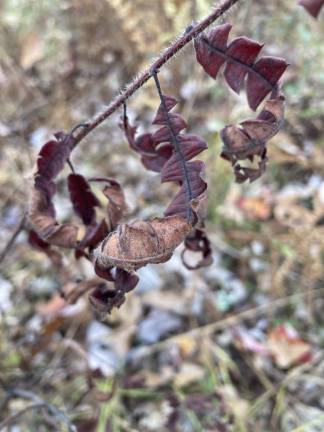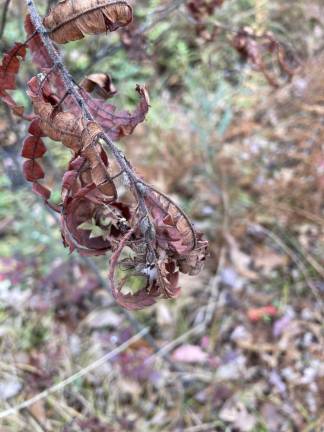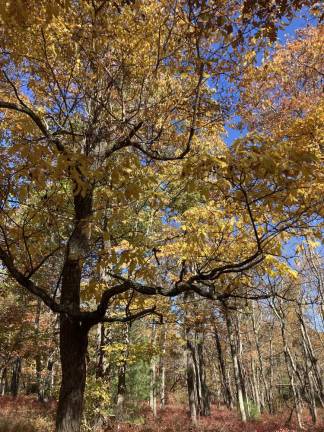Stalking your next wild edible



Winter can seem like a tricky time to forage, especially when greens and roots alike are buried under a blanket of snow. However, it’s prime time to stalk your next wild edible, literally and figuratively. Get to know your wild edible plants in their winter form – as stalk, seed and silhouette – and you’ll know just where to forage come the season.
Sweet fern is an easily recognizable plant in our snowy landscape. Sweet fern is not a fern, but a native shrub of the wax myrtle family that enjoys a sunny spot on the forest’s edge. Look for a downy spray of twigs arising from the snow. Twig tips bear slumbering catkins – male flowers waiting to burst forth in spring – and the curly cues of desiccated fern-shaped leaves. Crack a twig or pinch a catkin to emit their sweet and spicy fragrance. Come spring, shrubs with fresh green leaves will provide the tastiest woodland tea in all the land.
Put on your snowshoes and head out to the meadow. If it hasn’t been mowed, likely you’ll find the tall, branching stalks with brown, button-tops of bee balm. This wildflower has long since lost its color and scattered its seed, but come summer, you’ll know just where to look for this flavorful herb reminiscent of thyme (only better). By then, its lavender-hued flower crowns will be in full bloom and the pollinators abuzz with excitement. Know that in the company of bee balm you’re apt to find other dry, sunny meadow inhabitants like goldenrod and yarrow.
Deep in the woods, gaze to the canopy, in search of the candelabra of sassafras. Expect to see sassafras with its branches bent at the elbows, its terminal twigs like fingers pointed skyward. Bark is furrowed and forked. Likely encircling this mother tree are many saplings, mimicking the same form, but with smooth bark that remains green on the newest growth. Snap a twig and breathe deep a lemony bright scent that harkens back to sunnier days. Or better yet, dig deep, past the snow and into the earth, to carefully harvest a sapling’s ivory root. There’s nothing like hot sassafras tea on a cold winter’s day to warm the bones.
So, rather than hibernating ‘til spring, get to stalking and seeding and rooting. There is much to find!